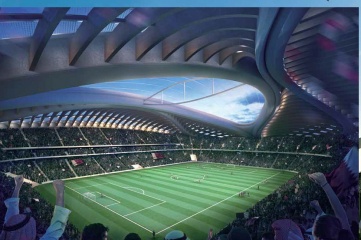HOST CITY: How does the design of Al Wakrah stadium fulfil obligations to FIFA?
Al Khater: Throughout the design process, the Qatar 2022 Supreme Committee has been working with AECOM and Zaha Hadid Architects to ensure all of FIFA’s stadium requirements, from bowl design to seating capacity, are fulfilled.
Al Wakrah Stadium’s concept design was developed to exceed FIFA’s requirements while remaining consistent with Qatar’s existing and future sports infrastructure needs.
HOST CITY: What will happen to the elements of the modular design that are to be removed after the World Cup?
Al Khater: Many of our stadia will include demountable grandstands. Those stadia will be downsized after the 2022 FIFA World Cup to ensure that Qatar is left with venues that are fit for purpose. Approximately 170,000 seats will be donated to countries in need of sporting infrastructure, which will be determined in conjunction with FIFA and the continental football confederations.
HOST CITY: How does the design of Al Wakrah enable it to act as a community hub?
Al Khater: Our plans are fully inclusive. We have listened to the community’s needs and taken into consideration their desires in the stadium and precinct plans and will continue to do so throughout stadium construction. As a reflection of these needs, the Al Wakrah Stadium Precinct will include:
- Two FIFA-compliant training pitches fully cooled to an optimal 26 degrees Celsius.
- A multi-purpose indoor arena incorporating two indoor halls and four tennis courts Two basketball courts and associated support facilities.
- A four-star business hotel with 150 rooms to support Al Wakr h as a fledging business hub.
- 5,000-10,000 sq m retail space available to Qatari entrepreneurs to incubate SMEs.
- A hospitality vocational training centre to train-up the local and regional youth, who will welcome the world to Qatar in 2022 and form the fabric of a Middle Eastern event management industry.
- An international school for 1,000 pupils incorporating a 400m running track
HOST CITY: The 2022 FIFA World Cup is currently scheduled to take place in the summer. How will the stadium create a comfortable experience for players and fans?
Al Khater: The Qatar 2022 Supreme Committee and teams of international climate control experts have developed environmentally-friendly outdoor cooling technologies and strategies to be deployed at stadiums, training sites, fan zones and other areas where fans, team delegations, match officials, media representatives and the FIFA family will congregate.


